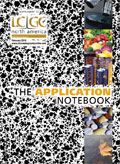GC–MS Analysis of Volatile Organic Compounds in Drinking Water: Productivity Solution for U.S. EPA Method 524.2
The GC–MS analysis of volatile organics in drinking water according to United States Environmental Protection Agency (US EPA) Method 524.2 offers a number of analytical challenges, ranging from water handling to very low target compound concentrations.
The GC–MS analysis of volatile organics in drinking water according to United States Environmental Protection Agency (US EPA) Method 524.2 offers a number of analytical challenges, ranging from water handling to very low target compound concentrations. The Thermo Scientific DSQ II GC–MS system provides excellent sensitivity and allows for the use of a 5 mL purge. To allow laboratories to realize this improved performance and productivity a comprehensive resource was created for Method 524 and made available online.
Experimental Conditions
In full-scan mode, the DSQ™ II has excellent sensitivity, allowing a split injection of 80 to 1 to be made on a conventional split/splitless injector. The high split ratio minimizes adverse effects of co-eluting water inherent in this method of sample transfer. The column flow was set to a constant pressure of 25 psi. A 20 m × 0.18 mm TRACE™ TR-524 column with a film thickness of 1.0 ?m was used for the analytical column. The DSQ II mass spectrometer was tuned to meet the criteria for the tuning compound 4-bromofluorobenzene (BFB) using Target Tuning software.

Table I: Highlights the calibration, daily calibration check, and detection limit study results for selected compounds.
Results
The analysis of 84 volatile organics was performed in 11 min. Over a concentration range of 0.4 to 40 μg/L, the compounds analyzed had an average % RSD of 6. The average method detection limit was 0.095 μg/L, using a 5 mL sample volume. A daily calibration check standard was run at 4 μg/L. The average difference was 2.0%.
Conclusions
The Method 524 Productivity Solution enables fast chromatography, with a short run time of 11 min. A high-throughput lab can easily process 36 samples or more per 12 h shift. Combined with a fast scanning rate, this method features excellent separation and sensitivity and generates MDLs required by the EPA method. Using the online productivity solution the DSQ II becomes a dedicated analyzer for volatiles, helping laboratories to achieve three times the sample throughput of standard methodologies.
For more detailed information on these methods please visit: www.thermo.com/enviro

Thermo Fisher Scientific, Inc.
2215 Grand Avenue Parkway, Austin, TX 78728
tel. (800)532-4752; fax (561)688-8731
Website: www.thermo.com

Separation of Ultra-Short and Long Chain PFAS Compounds Using a Positive Charge Surface Column
December 11th 2024A separation of ultra-short and long chain PFAS (C1-C18) is performed on a HALO®PCS Phenyl-Hexyl column along with a HALO®PFAS Delay column which demonstrates excellent retention for both hydrophilic and hydrophobic analytes.















